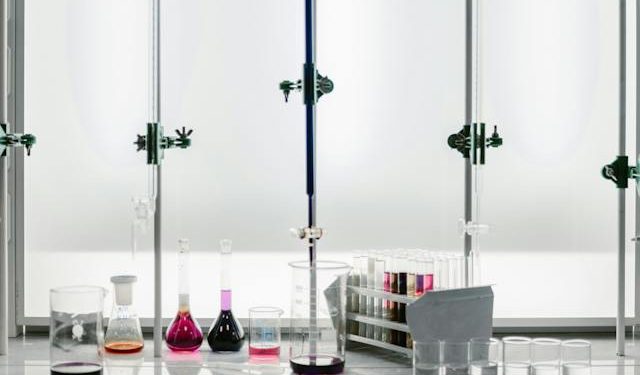Clinical laboratories occupy a unique niche in healthcare: they must simultaneously produce accurate diagnostic results while managing efficient billing procedures.
Modern laboratory information systems offer a solution for both problems. Unlike traditional reporting tools, they enable professionals to monitor and analyze test metrics in real time.
Streamlined workflows
At a time of increasing cost-cutting measures, streamlining processes is one way to make your organization more cost-efficient. But doing this doesn’t require major restructuring of your entire business model: with some creative thinking and modern tech tools at your disposal, streamlining could bring significant returns on investment.
LIMSs can help automate routine tasks, streamline lab processes, track key performance indicators and store vital patient data securely with access control features and role-based permissions. They also offer real-time reporting capabilities so it’s easier to identify and resolve issues more quickly.
An organized workflow can also help document processes and ensure compliance with HIPAA regulations, making them essential in central laboratory service which must strictly abide by Standard Operating Procedures and the Health Insurance Portability and Accountability Act. Furthermore, having a well-documented workflow will reduce risks and decrease manual error risk; further increasing overall productivity.
One effective strategy to streamline clinical workflow is creating an outline outlining each step in the process. While this doesn’t need to be formalized, an outline will give your team members a better sense of what needs to happen and allow for communication and collaboration among members of their team.
Avoid bottlenecks by spreading out workload more evenly. Understanding your organization’s existing process from start to finish allows you to identify areas for improvement and prioritize any areas that may need improvement with plans in mind for improvement.
As well as eliminating bottlenecks, you can improve the quality of your work by prioritising critical steps and eliminating redundant tasks. Doing this will enable you to meet patient needs more easily while raising team morale – in turn making them more responsive and agile when changes in workflow arise.
Establishing an effective workflow requires commitment from everyone on your team, along with strong vision. A project leader should oversee this initiative to secure executive approval for it and make sure that its sustainability.
Data-driven decision-making
Data analytics enables medical professionals and hospital administrators to make data-informed and validated decisions, rather than relying on intuition or guesses, when making operational efficiency, cost reduction, quality of care enhancement or patient satisfaction decisions. These decisions may improve operational efficiencies while decreasing costs – improving operational efficiencies while decreasing overall healthcare expenses as well as patient satisfaction levels.
Clinical laboratories stand at the crossroads between healthcare and business, making efficiency and effectiveness paramount for their operation. Billing processes, supply management and staffing management require constant consideration. Hospital labs that employ data-driven decision making techniques can streamline workflows while improving efficiency while saving money in the process.
An effective way to implement data-driven decision making is through laboratory analytics solutions. These software packages present laboratory’s test utilisation data in such a way as to easily identify unnecessary testing and potential areas for corrective action. By recognizing unnecessary tests using laboratory analytics solutions, hospitals can save money through optimising utilisation of reagents, staff time, and limited supplies.
Laboratory analytics also assists hospitals in recognizing billing errors that threaten revenue or client relations and address them quickly, using real-time analytics rather than traditional laboratory billing systems which only recognize errors once their effects have already had an adverse impact. Real-time analytics allows labs to detect errors as soon as they arise so as not to risk losing both revenue and client trust.
Employing the appropriate tools and techniques, hospitals can achieve data-driven decision making that will drastically transform their business operations. By adopting best practices organizations can optimize resources more efficiently while improving workflows to create more productive workflows that create greater results – ultimately building trust with clients while increasing productivity and bolstering bottom lines.
Collaborative communication
Health care organisations that foster an environment of collaborative communication enhance client satisfaction and the patient experience. Receiving inconsistent or unclear information from caregivers may cause them to be distrustful of health professionals, leading to mishaps and misunderstandings that result in costly medical errors.
Improving communication among clinical labs and the wider allied health community may not be simple, but it can be done. Teamwork is central to successful laboratory work; effective communication practices help teams meet their goals more easily. One such communication practice is SBAR (Situation Background Assessment Recommendations), an effective tool which establishes timely mechanisms for discussing critical situations.
Promoting interprofessional collaboration enables information to flow smoothly among departments. This approach reduces cognitive errors that could have grave or even fatal repercussions and allows cross-pollination of expertise – for instance, a microbiologist could teach a biochemist an improved technique that results in faster or more accurate tests. Furthermore, training sessions or interdepartmental meetings could be structured around shared goals, providing a framework to ensure information flows smoothly between them.
Clinical labs are complex environments, with each department from cytology to molecular diagnostics contributing crucially to understanding human health. By streamlining communication among these different teams, labs can better collaborate with multiple health care professionals while offering actionable diagnostic insights.
Collaboration among laboratory and allied health care professionals can lead to higher-quality care for patients. This is particularly applicable when treating chronic illnesses or complex diagnoses that necessitate input from multiple specialists. Interdisciplinary teams can help identify an ideal course of treatment, with diagnostic capabilities offered by clinical laboratories facilitating this process.
Improving communication skills among frontline clinical laboratory staff is a vital aspect of professional growth and should be an essential goal of professional development. This can be accomplished by creating opportunities for observational learning elsewhere within the hospital, inviting laboratory leadership into meetings that involve other services like POC testing or antibiotic stewardship meetings, or including laboratory representatives on interdisciplinary clinical rounds. Doing this will enable these staff members to understand their role within an allied health team and how their work contributes to creating more holistic, patient-centric care models.
Increased patient satisfaction
Patient satisfaction is at the core of healthcare delivery, and optimising lab practices can improve it further. From streamlining workflows and automating data processing to innovative technology advancements that increase lab efficiency and productivity – leading to more accurate test results and improved outcomes for patients while simultaneously increasing healthcare facility revenue streams.
Lab staff should communicate in an empathic and patient-focused manner in order to enhance patient satisfaction, such as explaining procedures, addressing any concerns, and keeping them updated about the status of their test results. Patients should also be encouraged to offer feedback freely through survey platforms, comment cards or face-to-face meetings.
Precision medicine rests upon our ability to gather and interpret large volumes of data, using advanced statistical techniques, to identify hidden patterns and relationships that would otherwise remain undetected. With these insights at their disposal, clinicians can tailor treatment plans specifically tailored to each patient.
Genomic analyses have identified genetic variants which affect responses to medications prescribed – this information has led to tailored medications strategies for cardiovascular disease patients.
While precision medicine advances are impressive, it must be remembered that there are important ethical considerations. These include issues pertaining to patient privacy, data security and consent; in addition to needing an effective regulatory framework to ensure these technologies are safe and effective in healthcare settings.
Although lab practices present unique challenges, their potential benefits outweigh any possible downsides. Utilising appropriate tools and methodologies, laboratories are capable of gathering vast amounts of data that can provide more complete understandings of patient conditions as well as hidden risks they might not have identified at point-of-care.
By adopting several best practices, clinical laboratories can enhance patient satisfaction and achieve greater financial success. As a result, patients will become loyal customers who help expand their community via word of mouth recommendations or positive reviews.
Optimizing clinical laboratory practices through modern solutions like Laboratory Information Systems (LIMS), data-driven decision-making, and collaborative communication significantly elevates efficiency and patient satisfaction.
These strategies, combined with precision medicine advancements, underscore the vital role of laboratories in healthcare. Global Central Laboratory Service, like Spinos, exemplifies excellence in this transformative landscape










